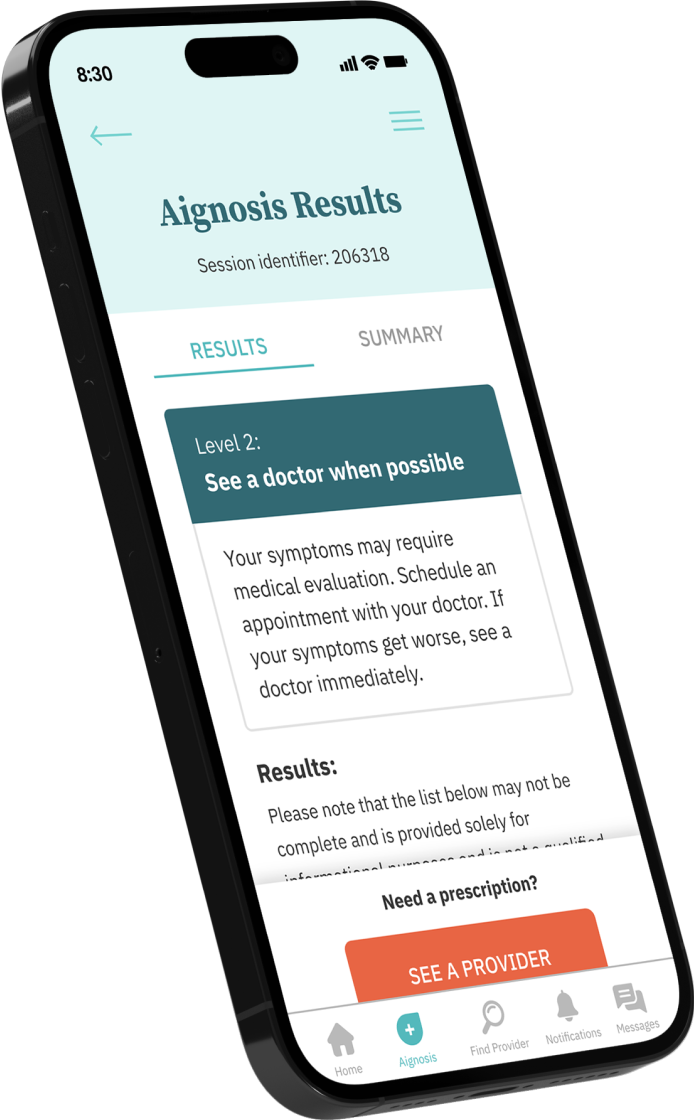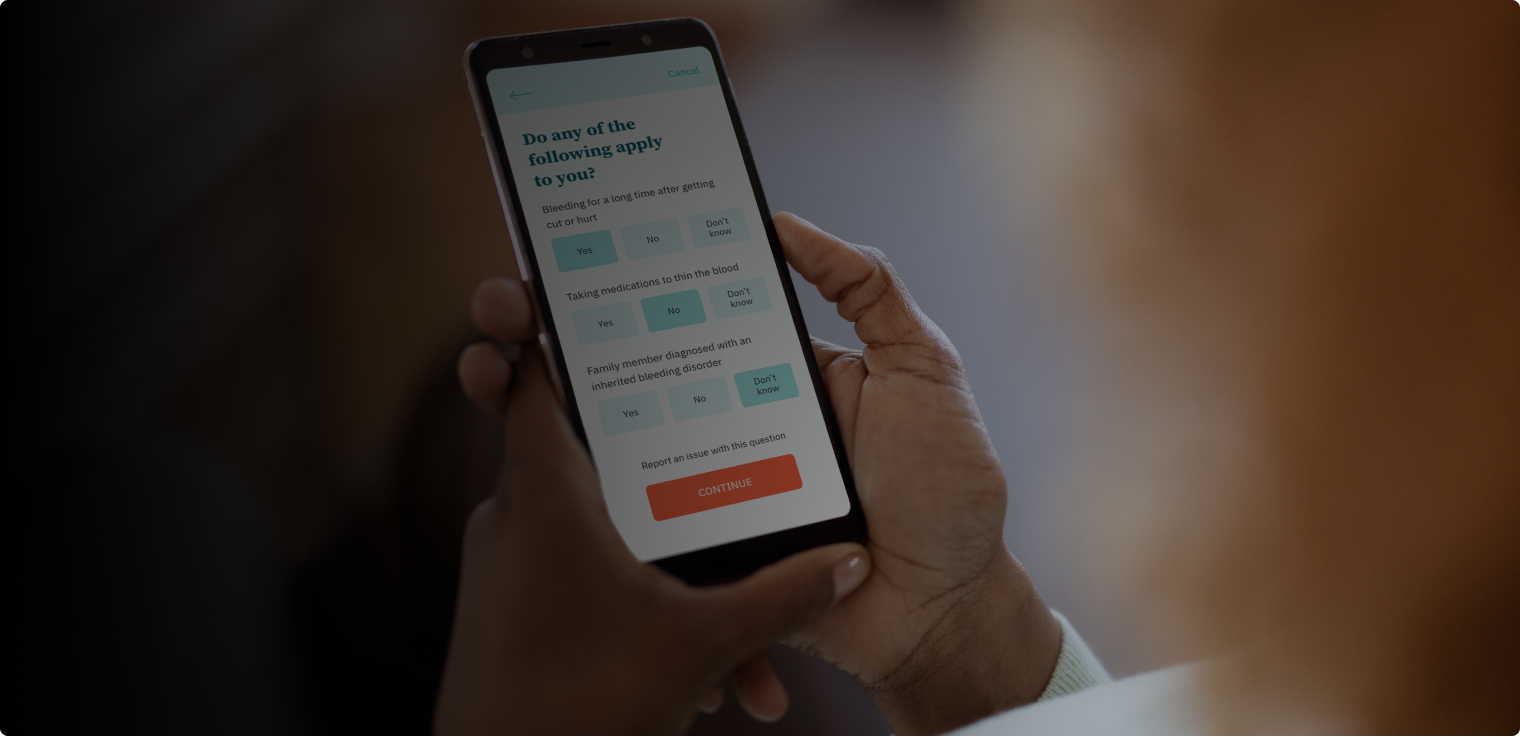(I-ug-NOH-sis)
The process of identifying a disease, condition, or injury from its signs and symptoms through the use of artificial intelligence (AI) and machine learning.

How Does the Sniffle AI Engine Deliver an Aignosis?
Through any mobile device, the patient initiates an interview process, which is led by the AI engine on the Sniffle app. Sniffle’s AI engine draws conclusions from patient data provided during intake to construct dynamic medical interviews.
Here’s How It Works:
Collecting Initial Evidence
The patient interview starts with gathering initial symptoms, risk factors, and demographic data. Additional input regarding the symptoms' occurrence or severity helps the engine be even more precise.
The AI engine is backed by a comprehensive library of thousands of medical conditions and covers multiple specialties, including pediatrics.
Intelligent Interview
The AI engine uses initial evidence to construct a dynamic interview based on probabilistic models and reasoning techniques. It was developed by our data scientists, who collaborated closely with hundreds of medical experts.
Drawing Conclusions
Sniffle’s AI knows exactly when to stop asking questions. The AI engine observes correlations between patients’ symptoms and hundreds of diseases. With every answer from the user, it becomes more accurate when assessing the most probable conditions.
Triage Recommendations
Finally, the AI engine presents the Aignosis with the most probable causes of the symptoms, paired with the suggested level of care. The causes with the highest level of probability are presented first. Combined with the answers from the intelligent interview, recommendations are unique to each situation.
How Was This AI Engine Created?
It was built by a global team of physicians, scientists, and engineers, representing various specialties and years of experience.
Its development was based on over 13 million clinical encounters used to diagnose symptoms with efficiency and accuracy.
It was designed to draw from over 12,000 sources, including reputable journals, guidelines and publications from international health organizations such as the WHO and the CDC.
What Makes it Unique?

Sniffle is designed to be delivered to patients through any mobile device through an easy-to-use interface.

Sniffle's medical knowledge database is based on adult, pediatric and adolescent medicine and it can differentiate symptoms according to patient age.

Because our database is based on the knowledge and processes that doctors use every day, the AI assesses patients' symptoms in a manner similar to that of physicians.

With every answer the AI receives from a user, its assessment of probable conditions becomes more accurate. Using our machine learning, answers continue to be validated by the AI even after they have been shared with the patient.

Physicians from all over the world collect the patient assessments and keep the Sniffle database up to date with the latest research results, while looking at patient health from a holistic perspective.
